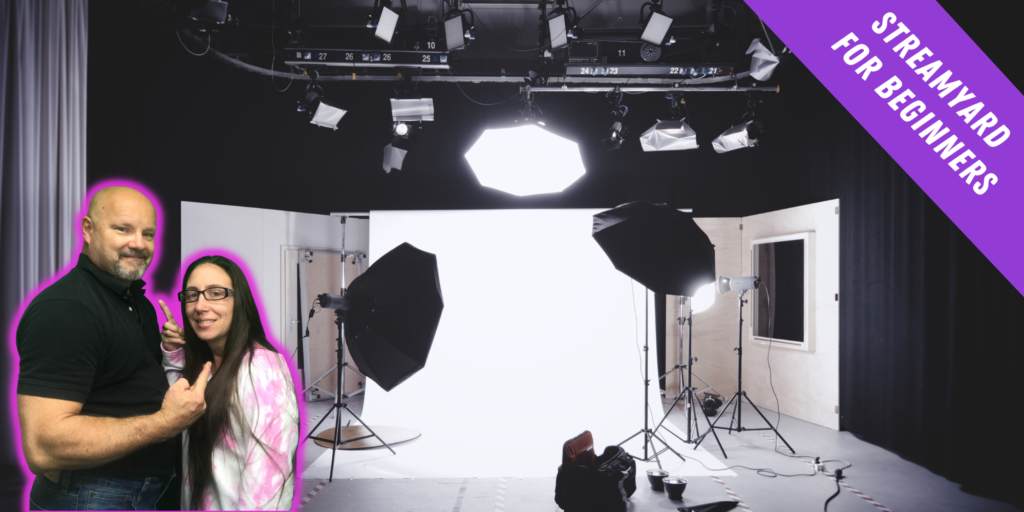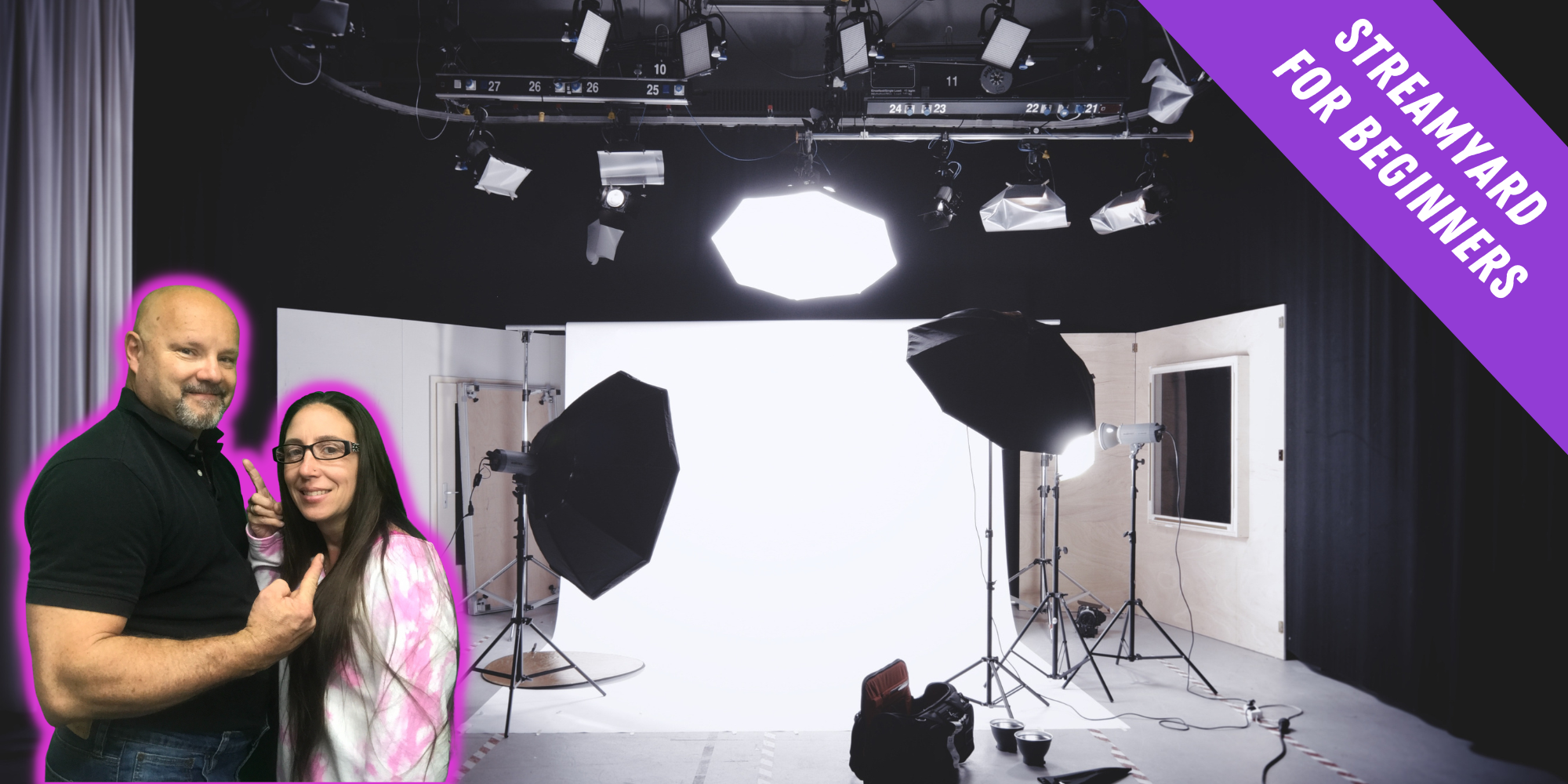
Finding the right live video lighting can be a process. Live streams are all about creating engaging content, setting the mood, telling a story, interacting with your audience in real time, and nurturing your loyal audience base.
Get your live video lighting setup right, and your live streams will look more professional and visually appealing. It will also help add depth and character to your live streams, the light you (the subject) up, and even add layers and dimensions to your live videos that elevate the overall quality.
In this live video lighting guide, you’ll learn how to use light to make yourself pop in your live streams while drastically improving the mood and quality of your live streams.
Why Proper Lighting Is Important In Live Streaming?
Lighting is one of the most critical aspects of creating a video because it allows you to set the mood for the video. Poor lighting can make a somber situation seem too light, or it can make a comedic situation seem more serious than intended. Pinpointing lighting directly on specific objects or people helps persuade the viewers to direct their eyes to the intended spot, which ensures that important aspects of the video are not missed.
Lighting can also be used to add color and texture to otherwise bland environments and scenes. The proper use of lighting can even change the way people and objects appear in the scene; they can look innocent, evil, frightening, happy, beautiful, or even ugly.
Directional lighting is used to control many different aspects of the video. For instance, lights that are too bright or are aimed directly at the camera can be distracting and may cause the viewer to miss critical moments in the video. If the lighting becomes too distracting, they may even stop watching the video.
Three Point Lighting
Three-point lighting is one of the most commonly-used techniques for video. By using these three main types of lighting, the main subject in a scene can be properly illuminated and highlighted.
- Key lighting: This light focuses on the main person or object in the scene. This typically illuminates the person or object, reducing shadows and making the subject stand out among other people, objects, or environment.
- Fill Lighting: Sometimes the key lighting does create shadows, and these must be eliminated in order to make the subject clearly stand out. Fill lighting is used to “fill in” all dark areas.
- Back lighting: This light provides a direct contrast between a specified person or object and the background environment.
Key Lighting
The key light is typically implemented first, as it is the most direct source of light that will be illuminating the main subject of the scene. Fill lighting and back lighting are very important, but they mostly supplement the key lighting.
One of the most important factors to remember: install the key light on whichever side of the camera the main subject is facing. Then you can play around with it to find the exact placement that is needed for the scene. Adjusting the angle and height of the light, even slightly, can change the look and the mood of the entire scene.
Fill Lighting
The fill lights are installed once the key lights have been placed. There will likely still be some areas of darkness and shadow from the key lighting, so the fill lights must be used to illuminate these dark areas.
When placing fill lights, you should ensure that they are not too strong or too light. If the fill lighting is too strong, it can actually create its own shadows, which is the very problem that fill lights are supposed to resolve. If it is too light, it may not properly fill all of the shadowed areas.
There are several ways to diminish the light if it is too strong. Depending on the type of lighting being used, it may be able to be dimmed using dimmers. If not, the light can be moved away from the subject. Filters and neutral density gels can also be used to effectively reduce the lighting.
Back Lighting
As the name implies, back lighting is placed behind the main subject. If there’s not enough contrast, or if the subject blends in too much with the environment, the back lighting is used to illuminate the silhouette of the subject in order to make it stand out. The camera responds well to this light by practically taking the subject away from the environment and background, and making the entire scene focus directly on that subject.
Dimmers can be used to effectively control the back lighting. As with key and fill lights, filters and neutral density gels can be used to reduce the back light if necessary. Placing the lights at different heights provides a variety of enhancements as well. Just be sure that light does not accidentally flash directly toward the camera as this can be distracting, and can cause problems with the video.
Natural Outdoor Lighting
If you are shooting outdoors during the mid-morning to afternoon hours, you may already have all of the lighting you need. Natural lighting can be the best type of lighting in many outdoor shooting situations; however, because of frenetic scheduling and delays, scenes can’t always be shot at the exact time of day that is necessary for the best lighting, so artificial lighting may need to be used.
You can use the sun as back lighting, as it provides a nice glow around the subject. The sun also typically reflects well off of environmental objects, and additional props can be used to reflect the sun as needed. This helps reduce the need for artificial light, although at different times of the day, you may find the need to use artificial lighting in conjunction with natural light.
Changing Colors
Sometimes just using lighting isn’t enough, and additional colors must be used to properly accent the scene. Colored sheets (color gels) can be used to quickly change the color of the lighting. These sheets are colored, but still allow enough light to pass through to properly illuminate the scene.
Color helps add drama, moods, energy, and excitement to scenes. Although certain colors may not seem natural to a scene, if it adds an element of excitement, or sets a specific mood, it may be used anyway. Just be sure not to overdo the use of non-natural colors as this can become distracting if too much is used.
Contrast
Contrast is one of the defining properties of a video. Contrast can be used to lighten or darken objects and shadows, illuminate subjects or other specific objects, and to create the perfect lighting for faces and close-ups.
Poor contrast can make specific actions confusing to the viewer, and can detract from the main subject. The use of f-stops is typically used to determine the proper contrast ratio.
Conclusion
There is much more to lighting than simply pointing a light at a subject. It takes time and experience to create the perfect lighting for multiple situations and different lighting environments. Understanding the proper usage of directional lighting, three point lighting, contrast, colors, and indoor and outdoor lighting can help ensure that your video turns out exactly the way it was intended. The best lighting typically goes unnoticed because that’s the way it was intended, but if viewers detect poor lighting or contrast in a video, it may be all they can talk about.
Don’t be afraid to try different methods until you get the right lighting for your exact situation. Keep in mind that directors often do dozens of takes on a scene for various reasons, including improper lighting. Trial and error using different colors, different height levels, filters, and reducing lighting that is too strong will allow you to reach your goal, and will help you create a video that people will want to watch.
? Try StreamYard FREE Here! https://streamyard.com/pal/4859907029073920
We cover connecting destinations, scheduling, inviting guests, simulcasting/multi-streaming, setting up your branding, and much more.
For additional documentation, visit https://web.facebook.com/groups/streamyardforbeginners
